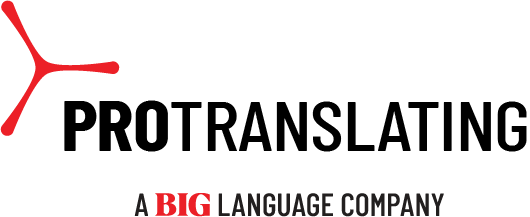Legal document translation is vital for businesses that work with people who use different languages. Legal translations may be necessary for reasons such as being approved for a local business license, being allowed to merge one business with another, or bringing in an employee from another world. In addition, individuals may need contracts, academic transcripts, medical and other certificates, or immigration documents translated.
If you are faced with the need for a legal translation, the best way to protect yourself against these risks is to seek the help of certified legal document translation services. This blog will discuss five reasons a professional translation service can help you meet your legal needs.
1. Legal translations require specific domain knowledge.
There’s a reason why the language of the law is called “legalese:” legal documents often feature terminology and phrases that the average individual doesn’t recognize or understand. In addition, the content of legal documents is domain-specific, and if you’re not a law expert, you may not even grasp it even if it is written in your native language. Moreover, translations must be as precise and relevant to the legal context as the original document.
The accuracy should be written by someone with a strong understanding of legal language and legal subject matter—both in the source document’s language and the translation language. This combination of required specialties requires professional legal document translation services.
2. Legal documents must adhere to specialized formats.
Many legal documents feature consistent characteristics or standard features and formats accurately translated. For example, it includes legal disclaimers, boilerplate language, provisions, and amendments, all of which need precise translations to ensure the document’s strength. Legal experts regularly dealing with these documents can quickly detect inaccuracies or inconsistencies that complicate any legal process.
Immigration forms and applications, for example, are precise in their instructions for completing these forms. Therefore, even after those forms have been filled, certified legal translation services must ensure proper instructions and formatting are carried over from the source document to its translated version.
3. Legal translations require a certificate of accuracy.
With translated legal documents, many governments, courts, and businesses will require those documents to be certified for accuracy. This certification benefits both sides of the legal process because it offers the assurance of accuracy to the courts, government agencies, and document owners.
Legal translation services streamline document processing and eliminate problems that can disrupt business proceedings for organizations and individuals receiving these documents. However, as a result, it increases the risk of application denials and even creates additional legal issues resulting from inaccuracies and errors introduced by a poor translation.
4. Localization is essential for legal translations.
Minor translation errors and oversights can lead to huge problems if legal documents’ legitimacy is questioned. Lawyers and other professionals may attempt to single out turns of phrases, or even individual words, to examine the intentions of a legal document.
Localization plays an essential role in producing iron-clad legal translations that hold up under the scrutiny of a foreign audience. In addition, localization helps ensures unintended legal interpretations are not caused by language that has yet to localize the region where documents are received. Without localization, there’s a risk that innocuous phrases and words used in legal translation will carry unintended political or cultural connotations that may offend its recipients or even be used to discredit your legal documents altogether.
5. Legal translation errors can have serious consequences.
When translating, you should consider the risk of inaccurate legal translations. Depending on the type of legal document being translated and the kind of mistake created during translation, inaccuracies can bring severe consequences to an individual or business.
You could find yourself or your business facing financial penalties, court disputes, contested lawsuits, or criminal charges resulting from these translation errors. At best, such slip-ups can impose a material cost in the form of penalties or delays created by having to resubmit new translations of these documents. However, severe cases could result in lost business opportunities, legal judgments, or even jail time.
Given these risks, individuals and businesses have plenty of incentives to find a qualified, certified translator that can handle legal documents and deliver results. BIG Language has over 160 years of combined experience providing legal document translation and localization for more than 300 languages and dialects. In addition, our translations are certified for accuracy, providing you with the peace of mind you need when tending to legal matters. Our linguistic experts are always ready to help if you require legal document translation.
Contact us today to see how we can help you with your translation needs!







